In urban living, balconies often serve as personal outdoor retreats, but limited space and close neighbors can compromise privacy. One of the most effective solutions is using plants as natural privacy screens. Greenery not only creates a sense of seclusion but also enhances the aesthetics of your balcony, reduces noise, and improves air quality. Selecting the right plants for privacy, understanding growth habits, and arranging them strategically can transform even a small balcony into a lush, private sanctuary.
This guide explores the best plants for balcony privacy screens, tips for container gardening, maintenance practices, and design strategies to create a green wall of privacy.
Why Use Plants for Privacy on Balconies?
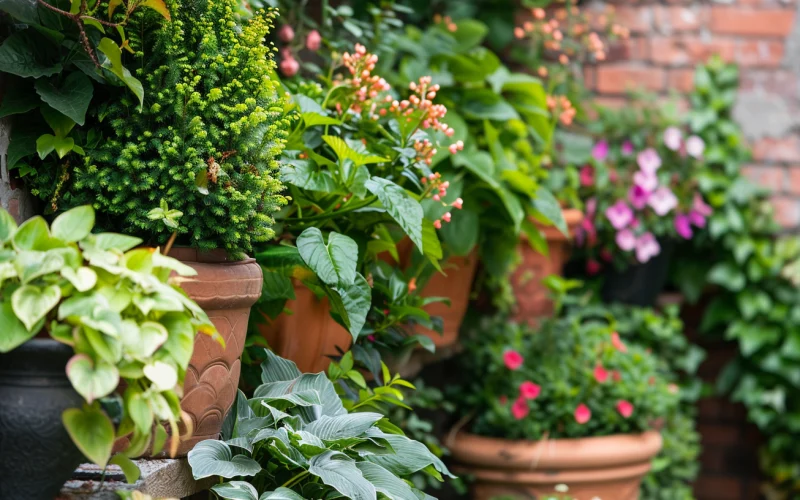
Balcony plants provide multiple advantages beyond seclusion:
- Natural Screening: Tall and dense plants block the view from neighboring balconies or streets.
- Aesthetic Appeal: Lush greenery adds color, texture, and life to urban spaces.
- Noise Reduction: Dense foliage absorbs sound, creating a quieter environment.
- Air Quality Improvement: Plants filter dust and pollutants while producing oxygen.
- Mental Well-being: Green spaces promote relaxation, reduce stress, and enhance mood.
Using plants as privacy screens offers a multifunctional and visually appealing solution for small urban outdoor spaces.
Step 1: Selecting the Right Plants for Balcony Screens
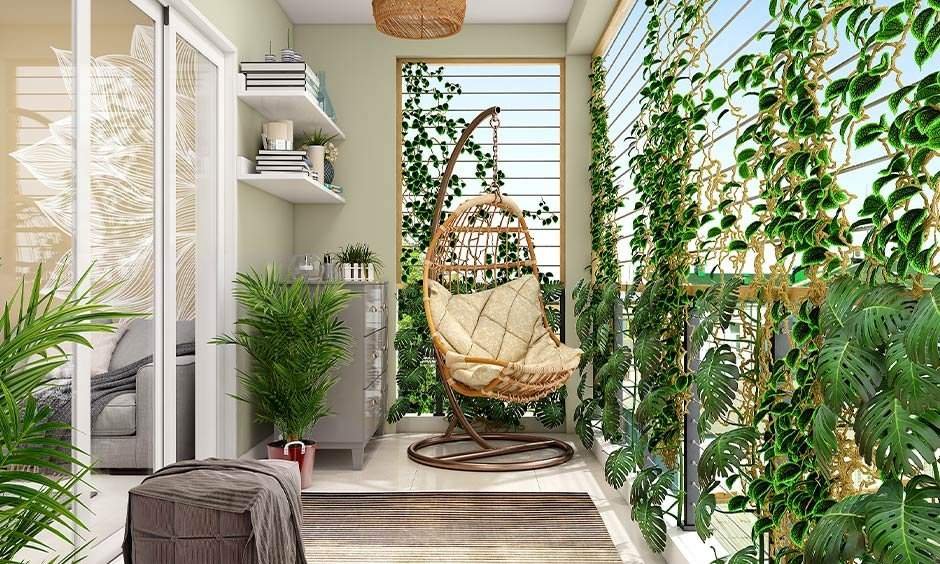
When choosing plants for privacy, consider height, growth habit, foliage density, maintenance needs, and container suitability. Here are some of the best options:
1. Bamboo
- Variety: Clumping bamboo is ideal for pots, while running types can be invasive.
- Height: Grows 6–12 feet in containers.
- Benefits: Fast-growing, tall, and dense, creating an effective screen.
- Care: Requires regular watering and occasional trimming; prefers full to partial sun.
2. Areca Palm
- Height: 4–8 feet in containers.
- Benefits: Dense, feathery fronds offer a tropical privacy screen.
- Care: Prefers bright, indirect sunlight and regular watering.
3. Ficus (Ficus benjamina or Ficus elastica)
- Height: 6–10 feet with pruning.
- Benefits: Glossy leaves create dense coverage; ideal for tropical balcony settings.
- Care: Needs bright indirect light and moderate watering.
4. Climbing Plants (Ivy, Jasmine, Bougainvillea, or Morning Glory)
- Growth Habit: Vines climb trellises, railing, or netting for vertical privacy.
- Benefits: Flexible, fast-growing, and can cover walls and railings efficiently.
- Care: Requires support structure, sufficient sunlight, and regular pruning.
5. Ornamental Grasses (Pampas Grass, Fountain Grass)
- Height: 3–6 feet in pots.
- Benefits: Adds movement, texture, and a dense barrier.
- Care: Prefers full sun and well-drained soil; moderate water requirements.
6. Boxwood or Dwarf Shrubs
- Height: 2–5 feet, suitable for formal, structured screens.
- Benefits: Dense foliage for evergreen coverage; low-maintenance.
- Care: Requires occasional pruning and partial to full sunlight.
By mixing tall, leafy, and trailing plants, you can create a layered, visually dynamic privacy screen that also looks natural.
Step 2: Choosing Containers for Privacy Plants
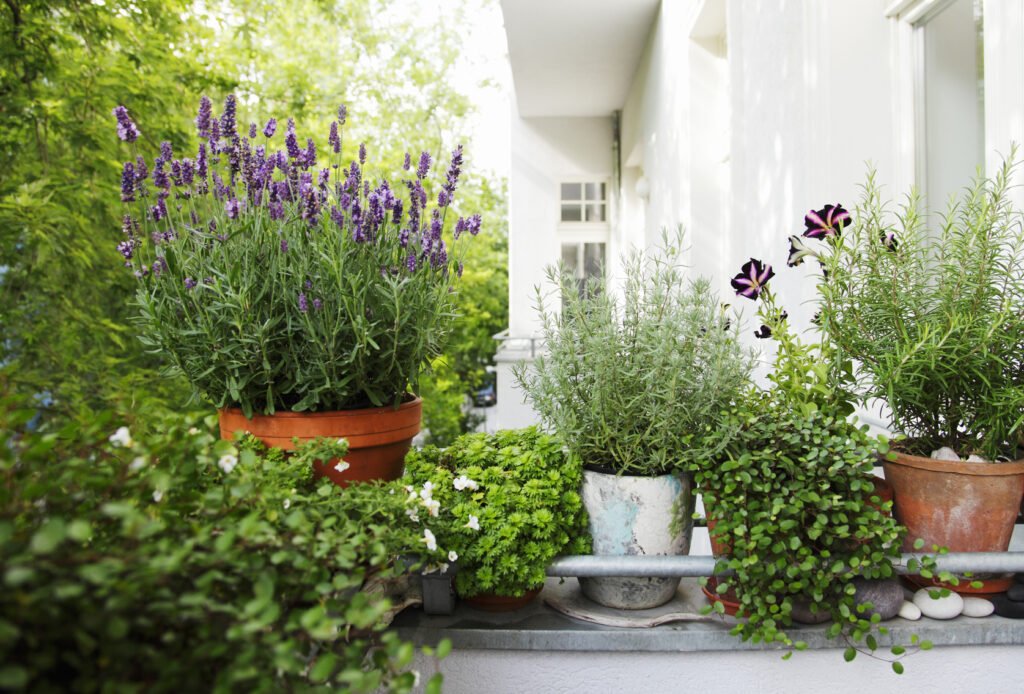
Container selection impacts growth and plant health:
- Size: Use large pots (12–20 inches in diameter) to accommodate root growth and stability for tall plants.
- Material: Terracotta, plastic, or fiberglass; ensure stability and durability, especially for heavy or tall plants.
- Drainage: Adequate holes are essential to prevent waterlogging.
- Mobility: For small balconies, consider wheeled containers for repositioning.
- Depth: Plants with deep roots, like bamboo and palms, need deep pots (18–24 inches).
The right container ensures healthy growth and stability for your balcony privacy screen.
Step 3: Strategic Arrangement for Maximum Privacy
Plant placement and layering make a significant difference:
- Layering: Place taller plants at the back or along balcony edges, with medium-height and trailing plants in front or along railings.
- Density: Group pots close together for minimal gaps and better screening.
- Vertical Elements: Use trellises, lattice panels, or hanging planters to maximize vertical space.
- Corners and Railings: Fill balcony corners and along railings with tall or trailing plants for optimal coverage.
Thoughtful arrangement ensures privacy without overcrowding and enhances aesthetic appeal.
Step 4: Soil and Fertilization for Container Plants
Proper soil and nutrients are crucial for healthy, dense foliage:
- Use Potting Mix: Light, well-draining potting soil is ideal.
- Aeration: Mix in perlite or coarse sand to improve drainage.
- Organic Matter: Compost or well-rotted manure improves fertility.
- Fertilization: Feed plants every 4–6 weeks with balanced, slow-release fertilizer; palms and bamboo benefit from high-nitrogen fertilizer.
Healthy soil encourages vigorous growth and lush coverage, essential for effective privacy screening.
Step 5: Watering Practices
Container plants require attentive watering:
- Consistency: Keep soil evenly moist but avoid waterlogging.
- Check Moisture: Insert a finger 1–2 inches into soil; water only if dry.
- Mulching: Use mulch to retain moisture and regulate temperature.
- Seasonal Adjustments: Water more frequently in hot months and reduce in cooler months.
Proper watering ensures dense growth and prevents stress or leaf drop.
Step 6: Pruning and Maintenance
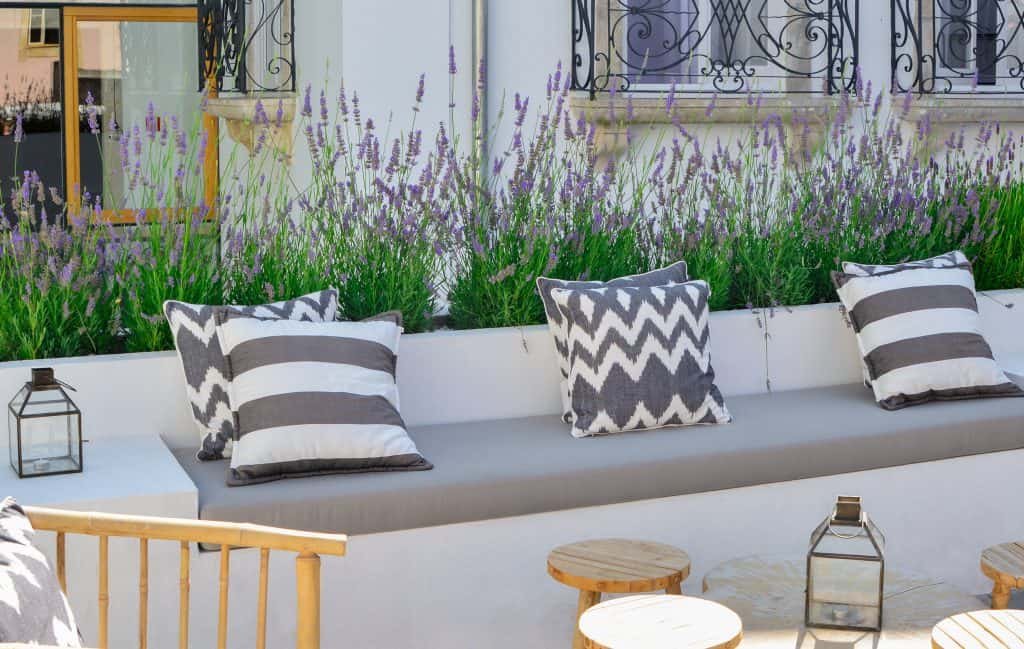
Regular pruning is key to maintaining privacy and plant health:
- Trim for Shape: Regularly trim overgrown foliage to maintain a tidy, dense screen.
- Remove Dead Leaves: Eliminates unsightly foliage and reduces disease risk.
- Encourage Bushiness: Pinch tips of vines or shrubs to promote lateral growth for denser coverage.
- Pest Control: Monitor for aphids, spider mites, or fungal infections and treat promptly.
Maintenance ensures your privacy screen remains healthy, dense, and visually appealing year-round.
Step 7: Supporting Vertical Growth
For climbing plants or taller species:
- Trellises: Provide strong vertical support for vines like jasmine or morning glory.
- Netting: Attach lightweight netting to railings or walls for flexible coverage.
- Stakes or Poles: Bamboo stakes can support taller plants like bamboo and palms.
- Training: Gently guide vines along the support structure for even coverage.
Support systems maximize vertical space and enhance privacy.
Step 8: Seasonal Considerations
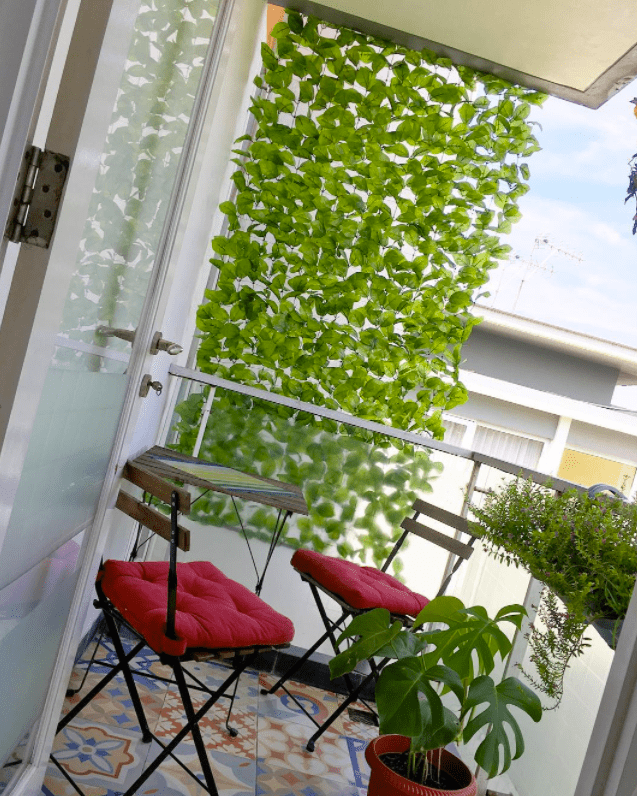
Balcony privacy screens require seasonal attention:
- Winter Care: Protect tropical plants and palms from frost by moving indoors or covering with frost cloth.
- Summer Heat: Provide partial shading and increase watering during extreme heat.
- Flowering Consideration: Some plants like bougainvillea bloom seasonally; combine evergreen plants for year-round screening.
Adjusting care based on seasonal conditions ensures consistent privacy and plant health.
Step 9: Combining Aesthetic and Functional Elements
Enhancing both privacy and aesthetics:
- Mix Plant Types: Combine tall, medium, and trailing plants for a layered, natural look.
- Color and Texture: Incorporate plants with varied leaf colors, shapes, and flowers for visual interest.
- Hanging and Rail Planters: Use vertical space effectively while adding dimension.
- Decorative Containers: Choose pots that complement the balcony décor for a unified appearance.
A visually pleasing layout enhances privacy while creating a lush, inviting balcony.
Step 10: Benefits Beyond Privacy
Using plants for balcony privacy offers additional advantages:
- Urban Cooling: Plants provide shade and reduce balcony temperature.
- Air Purification: Dense foliage filters pollutants and improves air quality.
- Wildlife Habitat: Flowers attract bees, butterflies, and other beneficial insects.
- Mental Well-being: Greenery reduces stress and promotes relaxation.
Balcony plants serve both functional and ecological purposes, making them an essential urban gardening element.
Conclusion
Creating a balcony privacy screen with plants is a practical and aesthetically pleasing solution for urban living. By selecting the right species, using suitable containers, arranging plants strategically, and maintaining proper care, even small balconies can become private, lush retreats.
The combination of tall, bushy, and trailing plants, along with trellises or rail planters, ensures year-round coverage, while proper soil, watering, and fertilization promote dense, healthy growth. Beyond seclusion, balcony plants improve air quality, reduce noise, attract pollinators, and enhance mental well-being.
With thoughtful planning and consistent care, your balcony can transform into a vibrant, private oasis, combining utility, beauty, and the joys of urban gardening.
